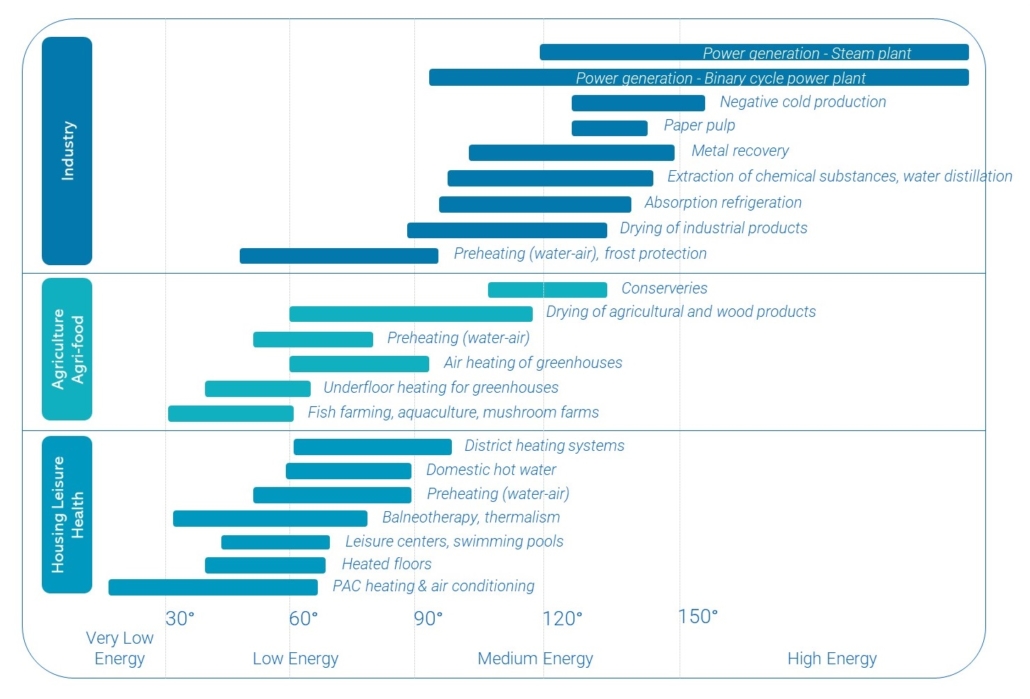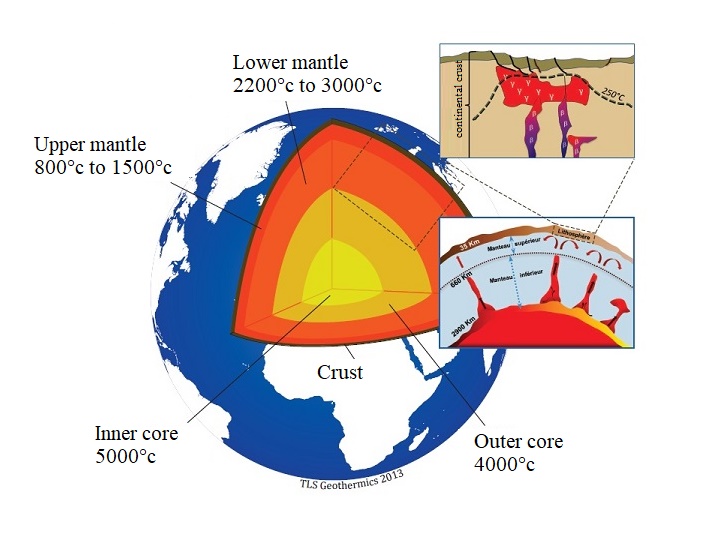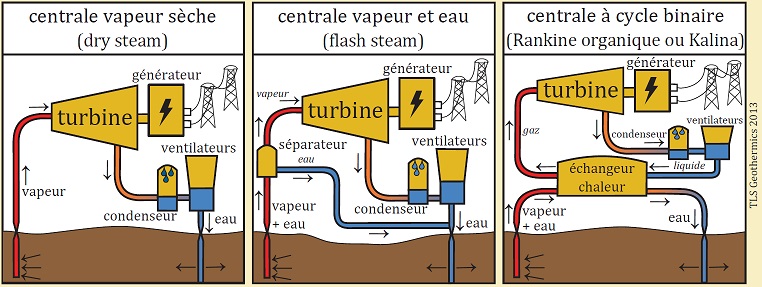Geothermal energy: What is it?
Geothermal energy originates from beneath the Earth’s surface. Approximately 20% of the Earth’s crust’s energy comes from the planet’s initial formation, while 80% is derived from the radioactive decay of certain elements, with a lifespan of billions of years, similar to the sun. The temperature increases as we delve deeper.
This thermal energy can be utilized directly or converted into electrical energy if conditions permit.
Different forms of exploitation
- High-energy geothermal energy: for electricity production. Usually exploited in active volcanic and tectonic geological contexts, it is also called high temperature geothermal energy. Geothermal waters are generally at more than 150°C. High temperature geothermal energy can also be developed in other geological contexts such as the Massif Central or Alsace in France, but also elsewhere in Europe, at depths varying from 2500m to 5000m.
- Low and medium energy geothermal energy: exploitation of hot water resources between 30° and 90°C, mainly used for district heating by heat networks and some industrial applications. It is widely used in the Paris basin, with some 40 plants and more than 100 wells drilled over the last 40 years, particularly in the last decade.
- Very low energy geothermal energy: for individual or small collective heating, by heat pumps with vertical geothermal probes (100 to 200m deep wells) or horizontal probes.
Geothermal energy: Temperatures and uses




